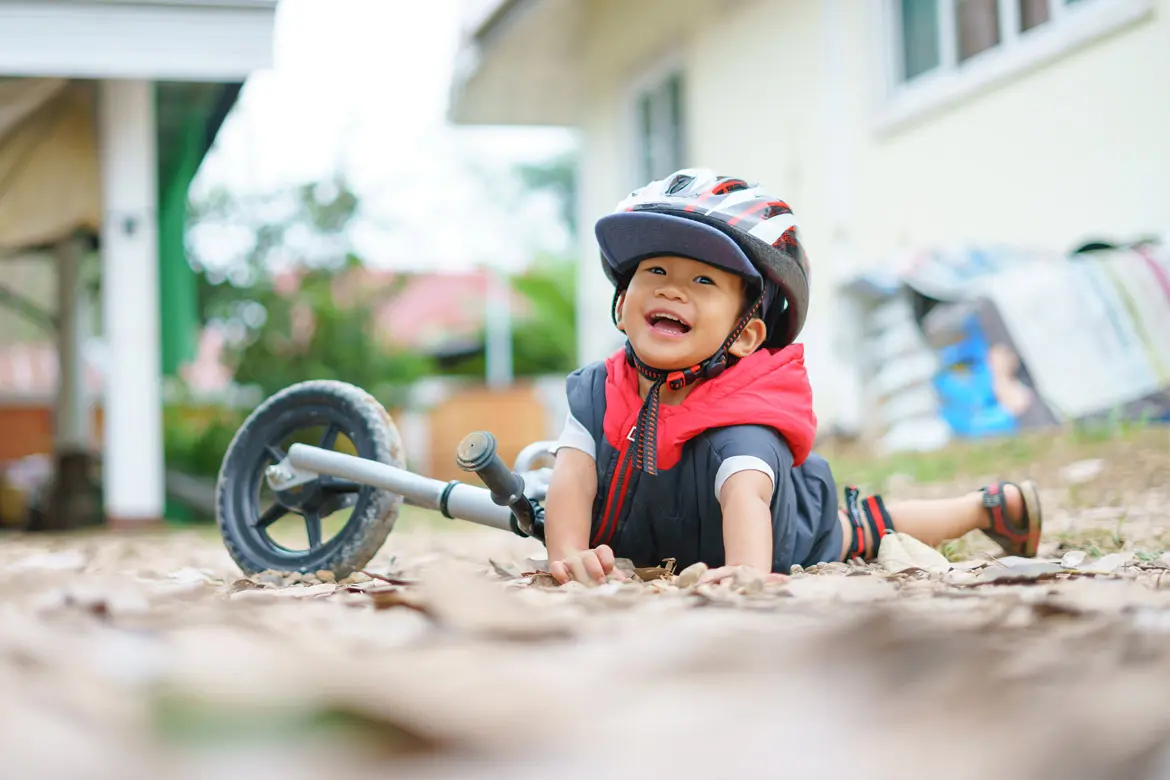Dr Low Eu Hong
Paediatrician


Source: Shutterstock
Paediatrician
For a child, an adventure awaits them every day. And as with any epic adventure, accidents can and do happen. Your child's insatiable curiosity for the world around them, coupled with their need for constant motion, is not something you can control.
Children often bump or bang their heads, especially for babies or toddlers who are just starting to crawl or walk. Thankfully, 90% of childhood head injuries are considered minor and can be managed with home remedies. Here are some simple steps parents can take to promote fall safety and minimise injuries when falls happen.
If your toddler has suffered an obvious open head injury or loses consciousness, it is obvious that you should seek medical attention immediately. But when there appears to be no physical sign of injury, the line is a little more blurred. In such cases, you should seek medical attention if you notice any of the following warning signs within a week of a fall.
Your child is:
You should also seek immediate medical attention if you notice a bulging of the soft spot on the top of your child's head or if their sleeping patterns change in the week following a fall.
Babies are more prone to falls and knocks as their heads are often proportionately larger than their bodies, making it easier for them to lose their balance.
Additionally, as their physical strength and abilities are still developing, they are usually still unstable and uncoordinated in their movements.
Some common scenarios where babies can bump their heads include:
There are many types of head injuries that can be acquired from a fall.
Mild head injuries are those that don't involve any skull fractures or underlying brain injuries.
After a minor bump in the head, the first thing that usually happens is that your baby cries. After crying, they may seem a little quieter or withdrawn than usual. This may last for up to 30 minutes.
The skin where the bump happened is also likely to immediately turn red. There may be bleeding from a cut or laceration. Gentle pressure can be used to stop the bleeding. Medical attention may be needed if the bleeding doesn't stop or when your baby starts to look pale and weak.
Within a few minutes or hours, you may see a "goose egg" start to form where the bump happened. There is no need to be worried about this as long as your baby is otherwise active and well. They may experience headache and discomfort, which might manifest as increased fussiness or difficulty sleeping.
Moderate to severe head injuries are those which involve the brain. These include:
Concussions are the most common and least severe type of traumatic brain injury. Signs of a concussion can include:
In very rare cases, severe head injuries can involve a fracture of the skull resulting in pressure on the brain. This also can cause swelling, bruising or bleeding around or inside the brain. Under these circumstances, emergency medical attention is needed to reduce the potential for long-term brain damage.
Though it is hard for a parent to not overthink a fall, not all falls are emergencies. Here are steps you can take If your toddler doesn't have any of the symptoms that require emergency medical attention:
Keeping your toddler safe from falls requires more than just blind luck. Here are a few steps you can take to promote fall safety and minimise injuries both around the house and outdoors:
Indoors:
Outdoors:
It can be difficult to make sound and rational split-second decisions when you witness your toddler take a hard fall for the first time. (It doesn't get easier). If you ever find yourself in doubt, it is advisable to bring your toddler in to the Urgent Care Centre (UCC) for a clearer diagnosis.
During a medical emergency in Singapore, you can also call +65 6473 2222 for an ambulance that will transport you to the nearest hospital or a hospital of your choice. Learn more about Parkway Emergency services.